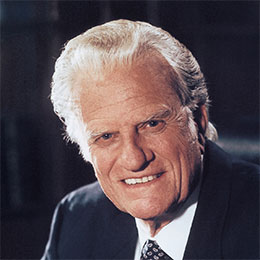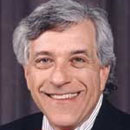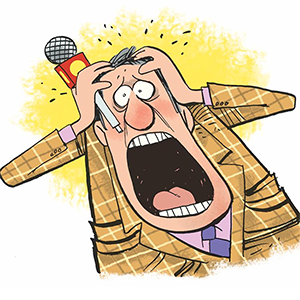Religion
/Health
Pastor hid sexual abuse for years as churchgoer preyed on girls, Okla. lawsuit says
Four women learned they were sexually assaulted by the same member of an Oklahoma church, but their reports to the pastor never made it to authorities, according to a lawsuit.
Charles Sulivant, a 92-year-old and former member of Shawnee First Church of the Nazarene, was charged in October 2024 with lewd and indecent acts to a child, but the ...Read more

A federal judge won't block ICE from entering Jewish and Christian congregations. How is that different from an earlier ruling?
PHILADELPHIA — A federal judge denied Friday a request by 27 organizations representing Christian and Jewish denominations to block a policy from President Donald Trump’s administration that allows for immigration enforcement agents to enter houses of worship without a warrant.
The ruling comes less than two months after a different federal...Read more

For Passover, this group prepares Seder meals for the most vulnerable
MIAMI -- For many South Florida Jews, Passover is a holiday marked by spending time with family and friends, observing long held traditions and of course, eating festive food. As many sit down to their Seder meals Saturday night, one Broward organization is remembering those who struggle to put food on the table.
The Dorit & Ben J. Genet ...Read more

Should states fund religious charter schools? What Americans said in new poll
A majority of Americans said they don’t think states should be required to provide funding for religious charter schools, according to a new poll.
Fifty-seven percent of U.S. adults said states can refuse to fund religious charter schools, while 43% said states are required to do so, according to a poll published this week by Marquette Law ...Read more

After a decade of debate, Georgia now has a 'religious liberty' law
ATLANTA — Gov. Brian Kemp signed a “religious liberty” measure Friday, resolving a decade-long debate over a divisive measure that supporters say protects faith-based beliefs from government overreach and critics decry as a license to discriminate.
The Republican inked the bill at a brief signing ceremony at the state Capitol as lawmakers...Read more

Philly clergy build an altar outside of ICE headquarters, demanding return of church protection from immigration arrests
PHILADELPHIA — Clergy from across Philadelphia erected an altar in front of ICE headquarters on Thursday, decorating it with fruit, flowers and crosses in a prayerful protest against the Trump administration’s decision to let agents make immigration arrests in churches.
The demonstration spilled off the sidewalk and onto Eighth Street in ...Read more

Republicans push divisive 'religious liberty' bill through Georgia Legislature
ATLANTA — After a decade of fierce debate, Georgia approved one of the most divisive bills in recent state history by passing a “religious liberty” measure that supporters say protects faith-based beliefs from government overreach and critics decry as a license to discriminate.
Republicans muscled the initiative through the Georgia House ...Read more

Va. General Assembly grounded to halt in apparent conflict over judicial nominee's religion
RICHMOND, Va. — The General Assembly started about two hours late at its reconvened session Wednesday because of an apparent discord over a judicial nomination for a Virginia Beach court.
The drama started when the confirmations, expected to be passed in both chambers quickly, ground to a halt, apparently over conflict surrounding Aaron Kass,...Read more

Majorities across most faith groups in poll say abortion should be legal -- except these 4
A majority of people in most religious traditions support abortion being legal in the U.S., as do most Americans, a new poll found.
However, four major religious groups — Hispanic Protestants, Latter-day Saints, white evangelical Protestants and Jehovah’s Witnesses — for the most part believe abortion should be illegal, according to an ...Read more

Commentary: Finding common ground in America's religious realignment
In a moment defined by fracture and division, a surprising development has emerged in America's religious landscape. The decades-long decline of Christianity is leveling off.
According to new research from the Pew Research Center, the share of Americans identifying as Christian has stabilized at around 62% — a dramatic shift from previous ...Read more

Satanist leader arrested after physical clash inside Kansas Statehouse during Black Mass
A physical altercation inside the Kansas Statehouse on Friday ended with Capitol Police arresting Satanic church leader Michael Stewart, capping off a morning of inflammatory religious demonstration.
Stewart punched a man who repeatedly attempted to rip a booklet out of his hands while he called out to Satan from the Capitol’s first-floor ...Read more
Church director accused of raping minor over years is arrested during Mass, Ohio police say
A director of worship who worked at two Ohio Catholic churches was arrested during Mass and charged with sexually abusing a minor, according to officials.
Andres Andino, 59, had outstanding warrants when his license plate showed up on Avon Lake Police’s camera system March 16, the Chronicle Telegram reported. Police arrested him outside one ...Read more

Survivors of abuse at International House of Prayer-Kansas City push for Missouri lawmakers to make this change
KANSAS CITY, Mo. — One by one, the speakers walked up to the small table early Wednesday, then sat and faced the panel of lawmakers in front of them.
Several came from across the country — Michigan, Minnesota, Tennessee and Texas. For some, it was their first time in the Missouri Capitol building.
They came to testify in support of two ...Read more

As Lent and Ramadan coincide this year, Christians and Muslims explain why they fast
CHICAGO — In many Catholic parishes, people are gathering for Friday night fish fries because they abstain from eating meat on Fridays during Lent. In Muslim homes, people are gathering every evening for iftar dinners to break their sunrise-to-sunset fast from all food and drink, including water, during the holy month of Ramadan.
Lent, the 40...Read more
Georgia's 'religious liberty' measure is back on track with GOP support
ATLANTA — The Republican-backed push to pass “religious liberty” legislation seems back on a fast-track Wednesday after a House committee cleared the legislation, a week after two GOP lawmakers joined Democrats in a surprise move that blocked it.
This time, Republicans had the votes to muscle the controversial proposal through the House ...Read more

'They've got everlasting money, bro': Chicago archdiocese alleges conspiracy to file false sex abuse claims against defrocked priest
CHICAGO — A West Side man was talking to his imprisoned cousin in 2013 when he allegedly floated the idea of adding him to a string of bogus sexual abuse allegations filed against defrocked Chicago Catholic priest Daniel McCormack, court records show.
“I think I want to put you on these cases now,” the man told his cousin, who at the time...Read more
Tokyo court orders dissolution of church linked to former Prime Minister Shinzo Abe murder
A Tokyo court ordered the dissolution of a religious group whose fundraising methods and ties with ruling party politicians came under scrutiny following the assassination of former Prime Minister Shinzo Abe more than two years ago.
A spokesperson for the Unification Church, now formally known as the Family Federation for World Peace and ...Read more

'A new level of anger': Demonstrators disrupt worship, protest at Orlando churches
Rev. Terri Steed Pierce has encountered hate before. People have stood outside her church and shouted that as a gay woman she is an affront to the gospel. Videos of her sermons have been altered to make her sound like a cartoon character and used in social media campaigns to disparage women and the LBGTQ+ community.
But Sunday, March 9, was the...Read more

Catholic leader in Kansas sues satanic church, arguing it stole holy items for upcoming ritual
KANSAS CITY, Kansas — Catholic Archbishop Joseph Naumann of Kansas City, Kansas, is suing the Satanist organizers behind next week’s planned Black Mass ritual at the state Capitol, alleging that they unlawfully obtained a consecrated host and wine.
The lawsuit, filed in Leavenworth District Court last Friday, names Michael Stewart, Travis ...Read more

GOP divisions derail 'religious liberty' vote in Georgia for now
The effort to revive Georgia’s controversial “religious liberty” legislation stalled in a House committee Wednesday after two Republicans joined Democrats to oppose it.
The measure could come up for another vote, but the Republican pushback to a bill Democrats have long rejected was another reminder of how divisive the legislation remains...Read more
Popular Stories
- A federal judge won't block ICE from entering Jewish and Christian congregations. How is that different from an earlier ruling?
- Should states fund religious charter schools? What Americans said in new poll
- For Passover, this group prepares Seder meals for the most vulnerable
- Pastor hid sexual abuse for years as churchgoer preyed on girls, Okla. lawsuit says
- After a decade of debate, Georgia now has a 'religious liberty' law







